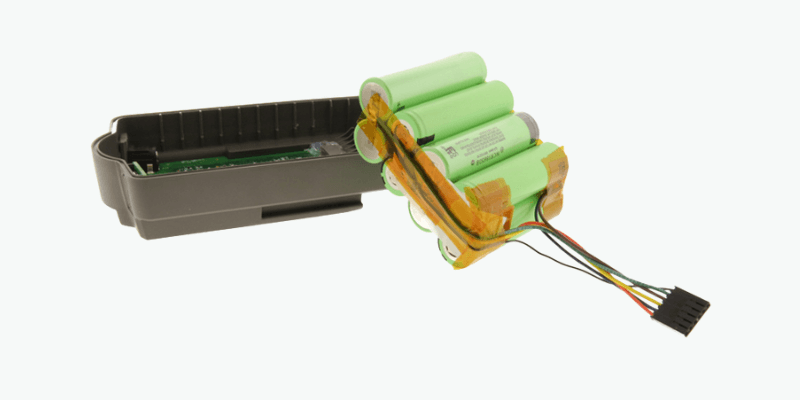يعتمد الطلب المتزايد على إلكترونيات أصغر وأخف وزنا وأكثر قوة على التقدم في بطارية الليثيوم أيون (لي أيون) تكنولوجيا. يتطلب تصميم حزم البطارية للأجهزة الحديثة موازنة كثافة الطاقة والسلامة والحجم والوزن والتكلفة والامتثال التنظيمي.
أبعاد حزمة البطارية وقيود الوزن
عادة ما توفر حزم البطارية الأكبر حزمًا أعلى لفترات أطول.
ومع ذلك ، تواجه الأجهزة المحمولة قيودًا على الوزن والمساحة ، مما يتطلب من الشركات المصنعة تصميم حزم خفيفة الوزن لا تزال توفر قوة كبيرة.
تتوفر بطاريات ليثيوم أيون بتنسيقات مختلفة لهذه الأجهزة ، بما في ذلك أسطواني، المنشوريةوخلايا البوليمر الحقيقية.
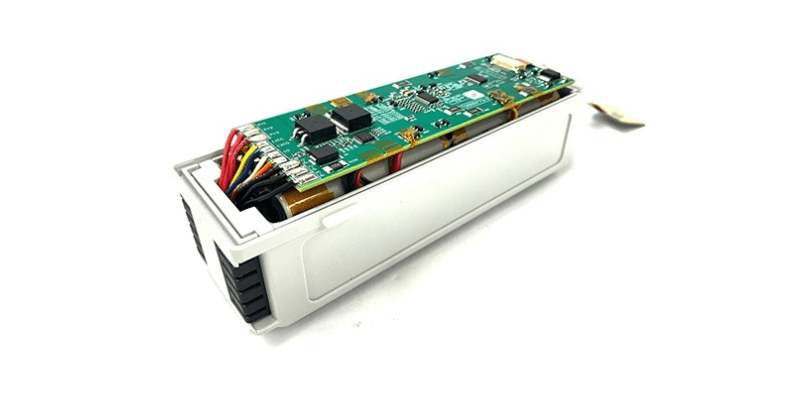
خلايا أسطوانية (على سبيل المثال ، 18650 ، 26650 ، 21700)
الخلايا الأسطوانية مع تصنيع ناضجة ، طاقة عالية محددة (200-260 WH/kg) ، الإدارة الحرارية الممتازة ، وفعالية التكلفة. لكن شكلها الصلب يحد من كثافة الطاقة الحجمية (500-600 WH/L) ومرونة التصميم.
دمج خلايا متعددة يضيف التعقيد ومساحة غير فعالة. يتم استخدامها بشكل شائع في الأجهزة الطبية المحمولة ، والأدوات التجارية والعسكرية المحمولة ، وأدوات الطاقة.
الخلايا المنشورية
تحتوي الخلايا المنشورية على غلاف مستطيل وعادة ما توفر كثافة طاقة حجمية أعلى (600-700 WH/L) من الخلايا الأسطوانية بسبب استخدام المساحة الأفضل.
لديهم مرونة في التصميم الوسيطة ولكن قد يكون لها طاقة محددة أقل قليلاً (160-220 WH/kg) وارتفاع تكلفة لكل كيلو واط ساعة. يمكن أن تكون الإدارة الحرارية أيضًا أكثر صعوبة.
خلايا البوليمر (خلايا الحقيبة)
تحتوي خلايا البوليمرات على أغلفة تصفيح الألومنيوم المرنة وكثافة الطاقة عالية الحجم (600-800 WH/L) ، مما يجعلها مناسبة للأشكال الرقيقة أو غير المنتظمة.
أنها توفر نسبة جيدة من الوزن إلى سعة (250-300 WH/kg) ولكنها تفتقر إلى الصلابة الميكانيكية ، وتحتاج إلى دعم هيكلي قوي.
تشمل التحديات تكاليف الإدارة الحرارية وتكاليف التصنيع. غالبًا ما تستخدم هذه الخلايا في الأجهزة المحمولة مثل الأجهزة القابلة للارتداء والمعدات الطبية والطائرات بدون طيار وأجهزة الكمبيوتر المحمولة والأجهزة اللوحية.
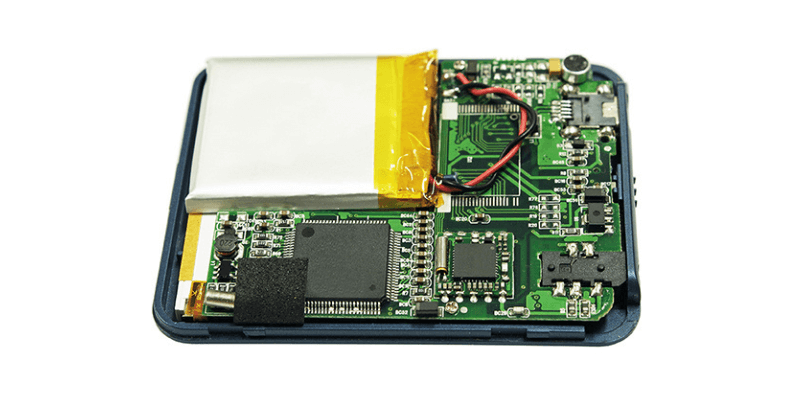
حدود ساعة وات
معلمة التصميم الرئيسية هي سعة الطاقة الإجمالية ، تقاس في ساعات Watt (WH = الجهد * ساعة أمبير). زيادة WH يمتد وقت التشغيل ولكن أيضا يزيد من الحجم والوزن والتكلفة.
تفرض لوائح السلامة قيودًا صارمة على WH للسفر الجوي: الخلايا التي تقل عن 20 W و حزم البطارية تحت 100 واط مسموح به دون قيود.
تتطلب حزم ما بين 100-160 WH موافقة شركة الطيران ، بحد أقصى اثنين لكل راكب أو قطع غيار. عادة ما يتم حظر عبوات أكثر من 160 WH كحمل. تؤثر هذه اللوائح بشكل كبير على الحد الأقصى للطاقة المتاحة للأجهزة الفائقة عالية الأداء مثل أجهزة الكمبيوتر المحمولة المتميزة.
شحن خيارات التصميم
يتطلب شحن بطاريات الليثيوم أيون معلمات محددة.
على عكس البطاريات الأخرى ، فإنهم يحتاجون إلى شحنات مخصصة بسبب اختلافات تصميم الشركة المصنعة التي تؤثر على إعدادات الجهد الحالية والجهد.
مع انخفاض المقاومة ، تتيح خلايا الليثيوم أيون الشحن بشكل أسرع ، لذلك يجب على أجهزة الشحن تقديم التيار الصحيح دون الشحن الزائد أو الشحن. تفضل شواحن مخصصة لحزم بطارية محددة على الطرز على الجرف.
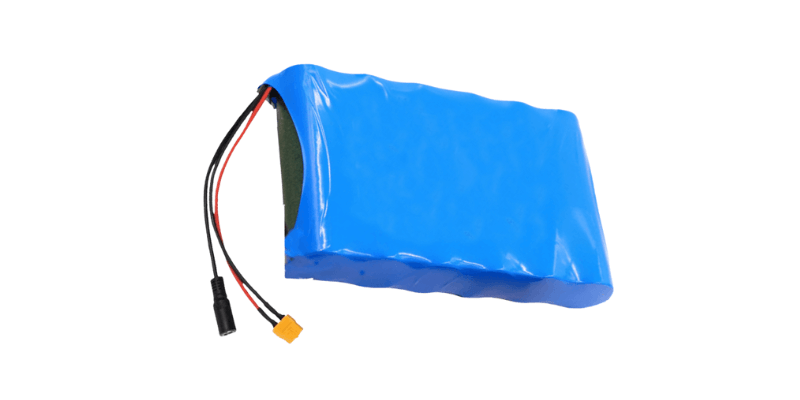
تصاميم BMS
تحمي أنظمة إدارة البطاريات (BMS) بطاريات الليثيوم أيون من قضايا مثل درجات الحرارة المرتفعة ، والشحن المفرط ، والرسائل السفلية ، و هارب حراري. تنص اللوائح على تثبيت BMS للجميع البطاريات القائمة على الليثيوم، بما في ذلك الأجهزة المحمولة.
بالنسبة للمواصلات ، تشمل ميزات BMS مراقبة درجة الحرارة ، وإدارة الشحن المفرط وإدارة التفريغ ، وتشخيص الأعطال.
تعد عملية التشغيل البيني ضرورية أيضًا لتوصيل حالة البطارية عبر الشبكات وأنظمة التحكم.
العلبة ميزات خاصة
تعتبر السلامة أمرًا بالغ الأهمية للأجهزة المحمولة باستخدام بطاريات الليثيوم أيون. يجب حماية هذه البطاريات من الثقوب والأضرار إذا تم إسقاط الجهاز أو سوء معالجته.
يمكن حماية الدائرة ، مثل أجهزة معامل درجة الحرارة الإيجابية البوليمرية (PPTC) ، حماية الدوائر أثناء الشحن والنقل.
تحمي العبوات أيضًا بطاريات ليثيوم أيون من الصدمات والاهتزازات مع السماح بتنفيس الغاز وتبديد الحرارة.
تقدم الشركات المصنعة خيارات العلبة المختلفة ، بما في ذلك التفاف المتقلص ، والبلاستيك المكون من الفراغ ، والبلاستيك المقعد بالحقن ، والذي يخضع للاختبار لإسقاط السلامة لضمان المتانة والموثوقية.
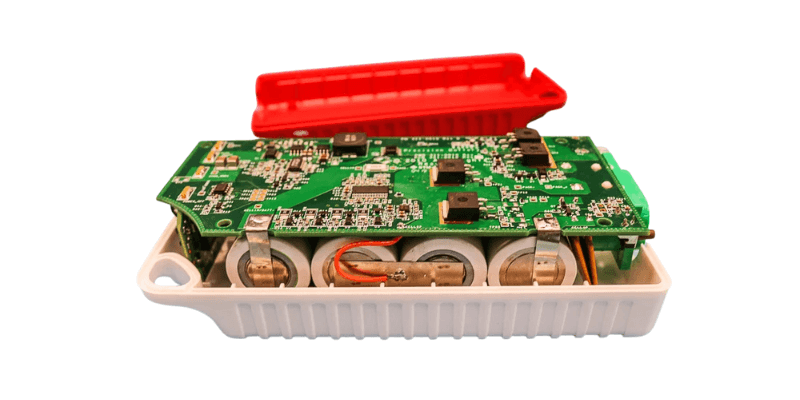
لوائح قابلية النقل
تنطبق لوائح النقل لبطاريات الليثيوم أيون على كل من الأجهزة المحمولة وغير المحمولة.
يجب أن تتضمن جميع بطاريات الليثيوم نظام إدارة المباني المكونات ، سواء تم شحنها بشكل منفصل أو تثبيت. تقتصر على 100 واط كحد أقصى ما لم تتم الموافقة عليها من قبل الناقل. تتطلب الأجهزة المحمولة اختبار السلامة وإصدار الشهادات.
ابتداءً من يناير 2026 ، يجب أن يكون لبطاريات ليثيوم أيون شحنها بمفردها حالة شحن (SOC) بنسبة 30 ٪ أو أقل. بالإضافة إلى ذلك ، يجب أن تلبي العبوة للشحن غير المواصفات اختبار مكدس 3 متر إذا كان يحتوي على بطاريات داخل أو معبأة بالأجهزة.
خاتمة
يعتمد تصميم حزم بطارية الليثيوم أيون للأجهزة المحمولة على احتياجات الجهاز ومعايير الصناعة (مثل تلك الخاصة بالاستخدام الطبي أو العسكري) واللوائح اللازمة. أ الشركة المصنعة للحزمة البطارية المخصصة مثل بطارية Holo يمكن أن تساعد في تحديد التكنولوجيا والميزات المناسبة لضمان وظائف حزمة البطارية بشكل فعال ، وتبقى موثوقة ، وآمنة.

